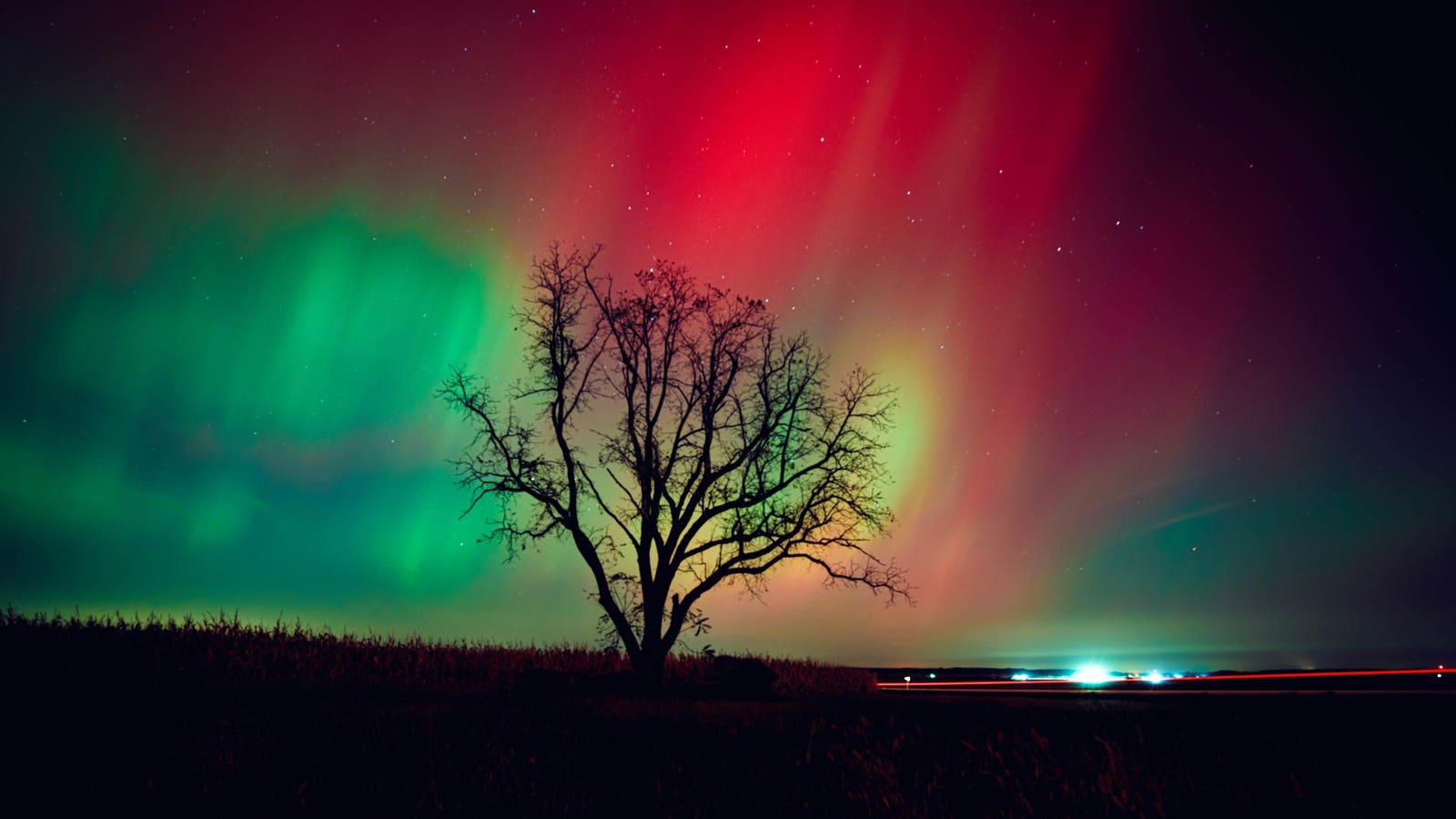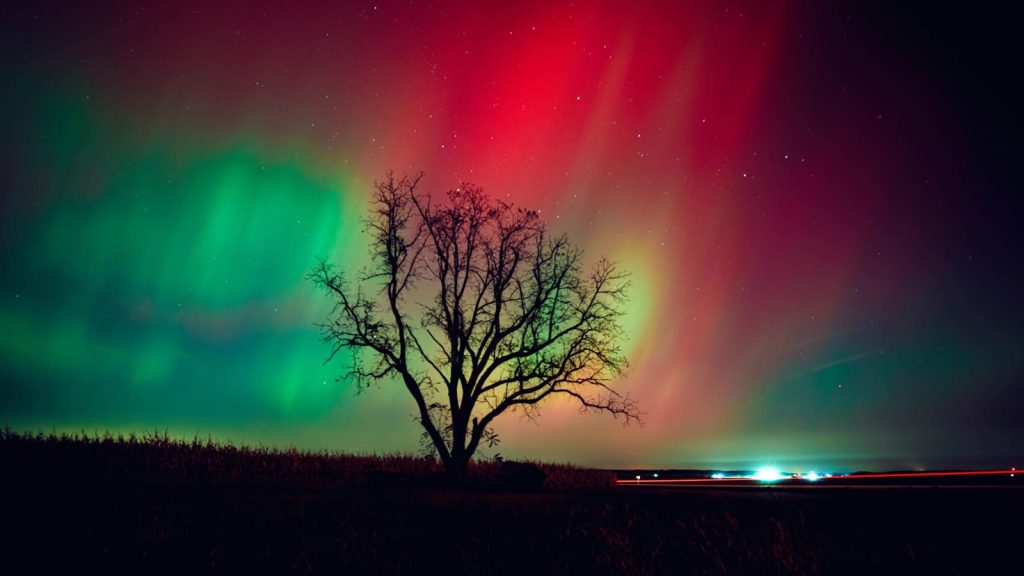Topline
This week’s “planet parade” peaks on Wednesday, Aug. 20, as a slender crescent moon shines close to Venus, with bright star Pollux in the constellation Gemini close by in the closest such sight until 2039. One of the highlights of the skywatching year, seeing the trio requires effort, taking place about an hour before sunrise. Three other planets — Jupiter, Saturn and Mercury — will also be visible to the naked eye, with Neptune and Uranus in the sky, but impossible to see without a telescope.
From Aug. 17–21, a spectacular “planet parade” (also called an alignment) features the moon and six planets.
getty
Key Facts
About an hour before sunrise, a slender 9%-lit waning crescent moon will shine in the eastern sky close to Venus, with Jupiter just above the pair, forming a stretched triangle shape. The moon’s slender crescent may glow faintly with “Earthshine,” a faint glow on the dark part of the moon caused by sunlight reflecting off Earth’s ice caps, oceans and clouds.
To the left of the trio will be Castor and Pollux, the “twins” in the constellation Gemini, while high on the right-hand side will be the bright stars of Orion — notably the three stars of Orion’s Belt. According to When The Curves Line Up, it’s the closest grouping of Venus, the moon and Pollux until 2039.
Mercury will hug the eastern horizon and be easier to spot closer to sunrise, while Saturn will be visible in the southern sky. Saturn is getting brighter as it nears its annual bright “opposition” on Sept. 21, when Earth will be between it and the sun.
Wednesday, August 20: ‘Planet Parade’ And A Moon-Venus Conjunction
Stellarium
Last Chance To See The ‘planet Parade’
The final chance to see the “planet parade” with the crescent moon in tow comes on Thursday, Aug. 21, when a slim 4%-lit waning crescent moon will be visible — possibly only through binoculars — beneath Jupiter and Venus. It will be close to Mercury and the Beehive Cluster (M44), just above the horizon, so it may be challenging to see. The next “planet parade” isn’t until October 2028, when five planets will be visible together before sunrise — over three years away.
Phases Of The Moon And The Next Total Solar Eclipse
A slender crescent moon such as the one visible before sunrise on Wednesday, Aug. 20, is often referred to by skywatchers as “the old moon in the new moon’s arms.” It’s on the cusp of slipping into the glare of the sun, with its new moon phase on Saturday, Aug. 23. Although it won’t move across the sun to cause a total solar eclipse, it will one lunar year later — and for three successive years. A lunar year is 12 orbits of the Earth by the moon, which takes 354-355 days. On Aug. 12, 2026, the new moon will cause a total solar eclipse visible in Greenland, Iceland and Spain. A lunar year later, on Aug. 2, 2027, a total solar eclipse will pass over Spain, North Africa, and the Middle East. Finally, on July 22, 2028, a total solar eclipse will be viable from Australia and New Zealand.
The “Great North American Eclipse” is seen using seven interval timer photos to show the full evolution of eclipse on April 8, 2024 in Mazatlan, Mexico. (Photo by Hector Vivas/Getty Images)
Getty Images
What’s Next In The Night Sky
After this week’s “planet parade,” only Saturn, Jupiter and Venus will be visible to the naked eye as Mercury sinks into the glare of the sun once again. Next month, there’s a total lunar eclipse on Sept. 7 for those in Asia, Africa and western Australia, a stunning view of a waning crescent moon, Venus and bright star Regulus on Sept. 19, and a partial solar eclipse on Sept. 21 for the Pacific Ocean. Saturn will also reach its annual “opposition” on Sept. 21, which is the best time to see its rings — though you will need a backyard telescope.
Further Reading
Forbes‘Planet Parade’ Myths Debunked And How To Truly See It — By A StargazerBy Jamie CarterForbesYour Ultimate Guide To Meteor Showers And The Perseids — By An ExpertBy Jamie CarterForbesNASA Urges Public To Leave The City As Milky Way Appears — 15 Places To GoBy Jamie Carter











